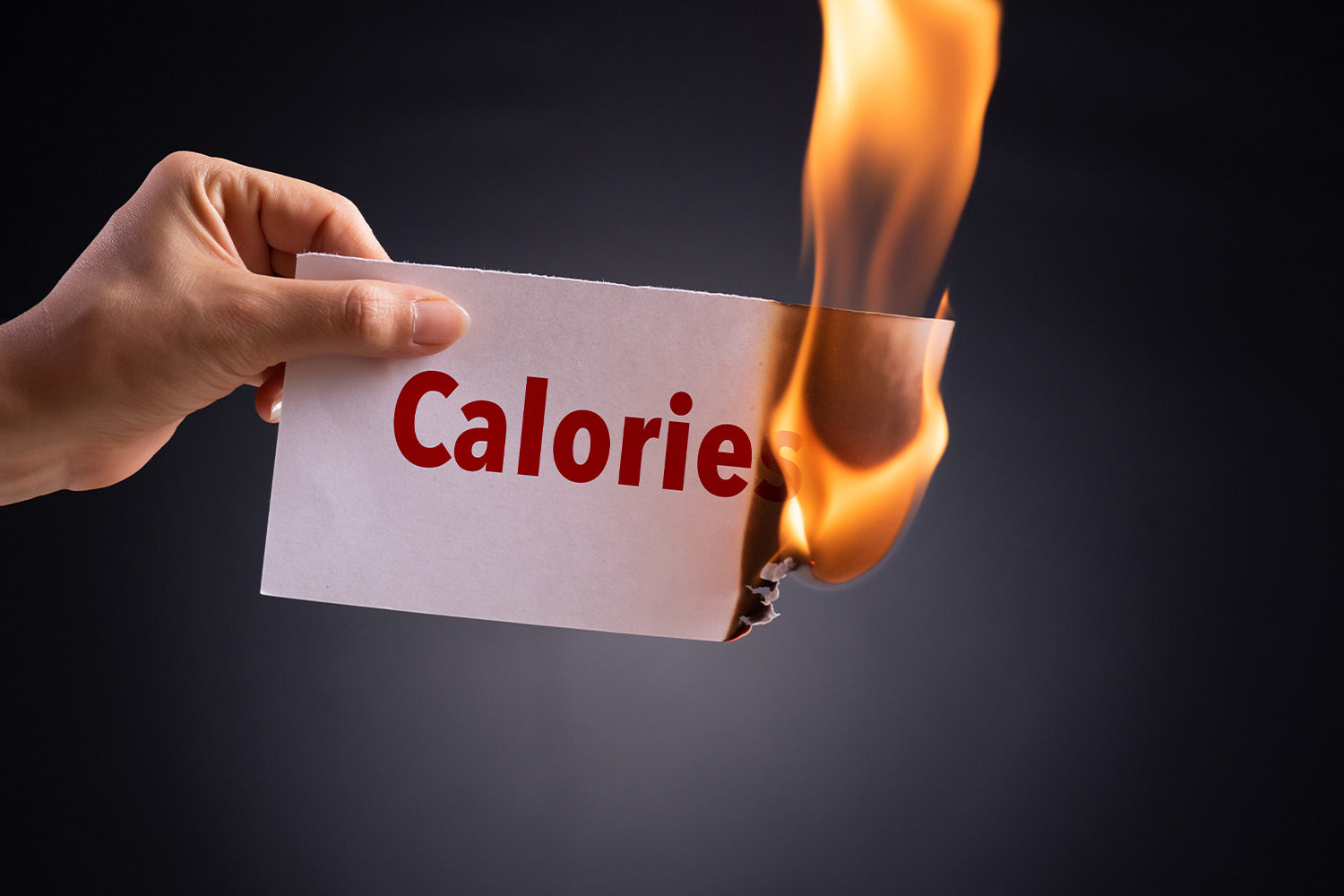Simply put, calories are units of energy that your body needs to burn to conduct everyday tasks. Therefore, no matter what you do, your body burns calories doing it. From going on a long run to watching television, your body is burning calories. But how many calories should your body be burning on a given day?
There’s no universal answer to this, as it varies greatly based on your lifestyle, environment, and fitness goals. If you want to figure out how many calories you should be burning, check out our guide on calories:
How Many Calories Do I Need to Burn to Lose Fat?
As a general rule of thumb, you need to burn 3,500 calories to lose one pound of body fat. That equates to nearly 12 hours of walking or six hours of running, not accounting for meals.
To break this down into a more realistic figure, it can be divided into a one-week span. For example, if you consume 2,000 calories per day, you can lose one pound of body fat each week by burning 2,500 calories per day.
That is a lot easier said than done, though, as even burning 2,000 calories per day would require hours of cardio. Nonetheless, starving yourself is not the answer. After all, without a proper diet, the quality and safety of your workouts would greatly suffer.
So How Many Calories Should I Eat?
To lose weight, you need to be in a calorie deficit. This means that on any given day, you’re burning more calories than you’re consuming. Conversely, to gain weight, you need to be in a calorie surplus. So how many calories should you be consuming?
The easiest way to calculate your caloric needs is to multiply your current body weight by 15. With that number, you can then add or subtract 500 calories, depending on your goal. For example, if you weigh 160 pounds, you should eat 2,400 calories to maintain this weight. Therefore, a diet of 1,900 calories, along with regular exercise, will help you lose weight.
A more accurate way to calculate your caloric needs is to consider your basal metabolic rate (BMR) and activity levels. Use one of the following formulas based on your sex to calculate your BMR:
Once you have your BMR, plug it into one of the below formulas based on your activity levels to calculate your daily caloric need:
Once you have that number, you can add or subtract 500 calories to get a general figure of how many calories you need to eat based on your goals.
What Burns Calories?
In a nutshell, everything burns calories. From going to the grocery store to taking a nap, you are always burning calories. The name of the game when it comes to losing or gaining weight isn’t so much about burning calories as it is in a calorie surplus or deficit.
That being said, exercise is vital to any healthy lifestyle. Therefore, you’ll want to know how many calories you're burning before figuring out your diet. Per hour, here are some of the most calorie-burning activities out there (based on a 155-pound individual):
- Running - 808 calories
- Water polo - 703 calories
- Bicycling - 596 calories
- Calisthenics - 596 calories
- Circuit training - 596 calories
- Jump rope - 562 calories
- Stationary bicycling - 520 calories
- Rowing machine - 520 calories
- Aerobic dance - 492 calories
- Swimming (casual) - 492 calories
- Jogging - 492 calories
- Hiking - 421 calories
This doesn’t tell the whole story, though.
Build Lean Muscle
Based on the above list, it’s obvious that cardio burns more calories than resistance training; however, it would be ill-advised to conduct only cardio exercises. In fact, in addition to making you look more toned and fit, building lean muscle through resistance will actually help you burn more calories.
When you have more lean muscle, you burn a more significant amount of calories at rest. Ten weeks of regular resistance training can increase your metabolism and reduce fat. Overall, your body becomes a more efficient calorie-burning machine as time passes.
As with most things in life, variety is a good thing. To maximize your weight loss results, combine both cardio and resistance training. The Ski-Row Air and Ski-Row Air + PWR machines by EnergyFit are the best way to do that.
These machines provide not only a high-intensity cardiovascular workout but also a full-body resistance workout. You can burn calories and build lean muscle mass all at once!
Putting It All Together
There is no set amount of calories you should burn in a day. Rather, take into account your lifestyle and goals. By figuring out how many calories you need to maintain your weight, you can subtract or add calories to adjust for your fitness goal. Remember, if you want to lose weight, shoot for a calorie deficit. If your goal is to gain weight, you want to be in a calorie surplus.
On top of diet, it is also important to consider how you exercise. While cardio burns the most calories, resistance training increases your metabolism, thus allowing you to burn more calories while at rest. With EnergyFit, you can do both at once! Find out how EnergyFit can improve your life.
Sources:
Controversies in Metabolism | UNM
32 fun ways to burn calories | Mayo Clinic
How to safely and effectively create a calorie deficit for weight loss | MedicalNewsToday
What Is a Good Amount of Calories Burned in a Workout? | Livestrong






Leave a comment
All comments are moderated before being published.
This site is protected by hCaptcha and the hCaptcha Privacy Policy and Terms of Service apply.